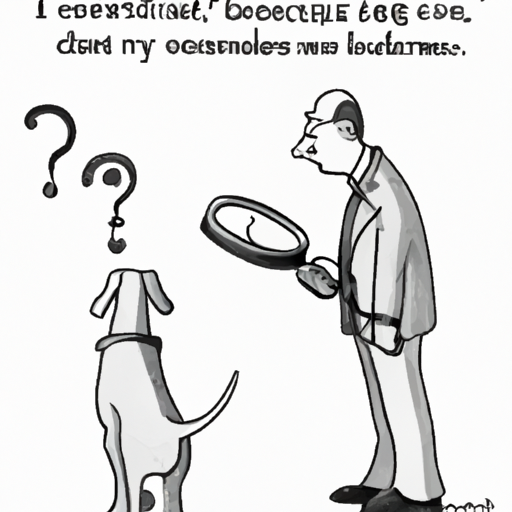Understanding Your Dog’s Tail Language
You’ve probably noticed your dog’s tail doesn’t just hang there. It’s a crucial part of their body language and can tell you a lot about their mood or intentions. A relaxed dog will carry their tail in a neutral position, extending outwards in line with their spine. On the other hand, an excited or alert dog might hold their tail higher, while a scared or submissive dog will tuck their tail between their legs. But what if your dog’s tail is curled?
A curled tail in dogs is not always a sign of emotion or mood – it can be a breed-specific trait. For instance, breeds like the Siberian Husky, Pug, and Basenji have tails that naturally curl over their backs. This is due to the specific way their vertebrae are structured.
The Genetics Behind Curled Tails
The curl in your dog’s tail is all down to genetics. Dogs with curled tails have inherited genes that cause the vertebrae in the tail to curve. The degree of the curve can vary – from a slight curl at the tip to a full curl over the back.
Tail shape is just one of many physical traits determined by multiple genes. These genes are inherited from both parents and can vary widely even within the same litter.
The Role of Breed Standards
Breed standards play a significant role in the tail shape of purebred dogs. These standards are set by canine breed clubs and dictate every aspect of a breed’s appearance, including tail shape and carriage.
| Breed | Tail Description |
|---|---|
| Siberian Husky | Tail is heavily furred and carried over the back in a graceful sickle curve when at attention and/or when moving. |
| Pug | The tail is curled as tightly as possible over the hip, with a double curl being highly desirable. |
| Basenji | The tail is set high, curled, and carried over to either side of the back. |
Health Implications of a Curled Tail
While a curled tail is usually just a breed trait, sudden changes in your dog’s tail position could indicate a health problem. For example, a normally curled tail that is suddenly held straight or tucked between the legs could be a sign of pain or discomfort.
If you notice any sudden changes in your dog’s tail position or behavior, it’s best to consult a veterinarian. They can help determine whether there’s an underlying issue that needs to be addressed.
Frequently Asked Questions (FAQs)
-
Why does my dog curl its tail when it’s not one of the breeds you mentioned?
- Not all dogs with curled tails are purebreds – mixed breed dogs can also have curled tails if they have a purebred ancestor with this trait.
-
Can my dog’s tail curling be a sign of a health issue?
- If your dog’s tail is normally straight and suddenly becomes curled, it could be a sign of discomfort or pain. It’s best to consult a veterinarian.
-
Can I do anything to straighten my dog’s curled tail?
- A dog’s tail shape is determined by its genetics, and there’s nothing you can do to change it. Attempting to straighten a naturally curled tail can cause harm to your dog.
-
Does a curled tail affect my dog’s communication?
- While a dog’s tail does play a part in body language, dogs with naturally curled tails can still communicate effectively with other aspects of their body language.
Remember, your dog’s tail is just one part of their unique personality and appearance. Whether it’s straight, curled, or somewhere in between, it’s a part of what makes your dog special!



